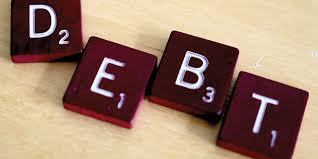The Bretton Woods institutions – International Monetary Fund and World Bank – are set to review Ghana’s classification as a high risk debt distress country next year.
The assessment of Ghana’s high risk debt distress status comes on the back of Ghana surpassing the 70 per cent debt-to-GDP benchmark.
The assessment exercise to be carried out mid-2021 by the IMF and World Bank, will look at Ghana’s ability to meet its debt obligations as well as challenges affecting the country’s revenue generation efforts.
The debt sustainability assessment by the two Bretton Woods institutions has become necessary given Ghana’s transition from a developing economy into a lower middle income country.
Ghana’s current debt stock which stands at 71 per cent of GDP, makes Ghana a high risk debt distress country although Ghana along with 27 other countries, had already been classified as high risk debt distress country since June this year.
Despite genuine concerns being raised about Ghana’s rising public debt by economists in the country, World Bank Country Director, Pierre Laporte, has noted that given the chunk of Ghana’s public debt being long term multilateral loans, he doesn’t forsee the nation becoming debt-distressed and subsequently being classified as one by the World Bank and IMF.
Managers of the Ghanaian economy have also noted that despite the spike in the country’s debt stock – which they posit is mainly due to the Covid-19 pandemic and exceptional costs incurred in the financial and energy sectors – they are hopeful that with their new economic programmes, the economy will see an expansion and will help improve the economy before the IMF and World Bank conducts its debt sustainability assessment next year.








